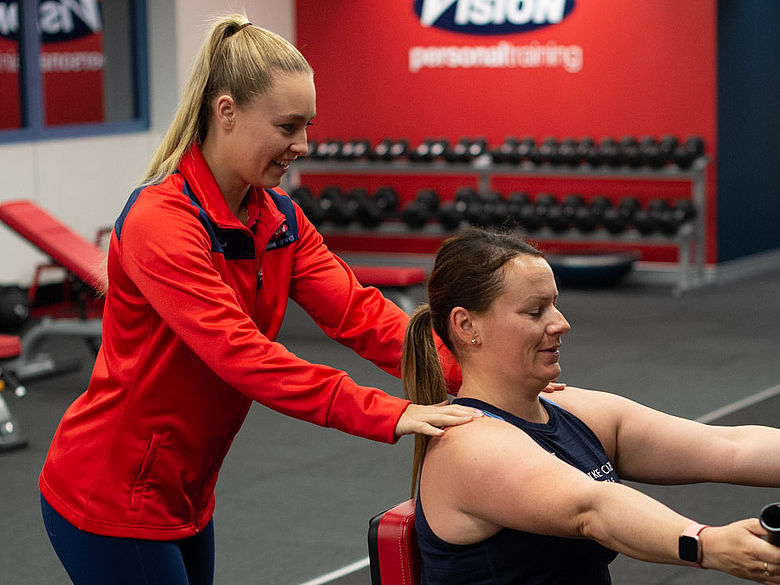Do you ever wonder after your first goal session when your trainer entered "cardio plan" into your training schedule what that actually means? Did you wander out of your goals session 1 and wonder what "low-moderate" and "hard" cardio actually mean? Do you understand what hard cardio is and how to actually reach that level of intensity in a session by yourself? I will aim to answer all of these questions for you in this article!
Frequency:
To see an improvement in your cardiovascular fitness, you should be performing cardiovascular exercise a minimum of 4 - 5 times per week. Interval training should be performed 2- 3 times per week.
Intensity:
The intensity of your cardio program is an extremely important aspect of your training and will be a massive factor as to whether you achieve your goal or not. There are two different types of intensity that you can work at. They are low-moderate and hard. Below I will explain these two intensities and how they affect the body differently. However, first it is important to understand your maximum heart rate, as your maximum heart rate is the most important indicator as to which zone you are working in. Basically, to work out your maximum heart rate, it is the simple equation of 220 - your age. So, a 40-year-old person's maximum heart rate will be 180 bpm (220 - 40 = 180). Low-moderate intensity cardio is when you are working at any intensity less than 80% of your max. heart rate. High intensity cardio is when you are working between 80-100% Max heart rate.
Low-moderate:
To be working in the low - moderate intensity cardio zone, you should be working in a zone typically between 65 - 80% of your maximum heart rate. A good level to tell if you are working hard enough is to check your breathing rate and heart rate. If you have a slightly elevated heart rate and an elevated breathing rate, you are working at a hard-enough level. You should work at this intensity for 30-60 minutes to gain any real benefit from your session.
The science behind hard cardio/interval training:
As personal trainers, we don't just use hard cardio to punish you. There are actually many studies that prove the benefits of hard cardio. Hard cardio is used to increase what is known as the anaerobic threshold. The anaerobic threshold is the point at which the lactic acid accumulation surpasses the breakdown of lactic acid. To put it simply, it is the point when you increase your intensity of cardio exercise to the point where your muscles start to feel like they are burning and you can't continue at that intensity. By working in that hard intensity cardio zone, your muscles and heart are adapting to those conditions and your anaerobic threshold is increasing. The main advantage of increasing your anaerobic threshold is to allow you to work at a higher intensity for a longer amount of time. Put simply, this is what allows you to go from a fast-paced walk to a jog or a jog to a run for example. Increasing this anaerobic threshold is important for fat loss as well as sporting performance, because it allows you to burn more energy in a session and allows you to go faster and harder for longer. You should perform hard cardio/interval training for approximately 30 minutes.
Using the VVT app in your cardio session:
Did you know that when you are doing a cardio program at the studio you can set your phone up to use it as a tracker for your cardio session? This will tell you exactly what intensity to work at and exactly how much time to work at that intensity for. Simply open your VVT app and go into the training diary. Here you can click on the day and choose to add "My cardio program". Once you open "My Cardio Program" you can actually input and save the times and intensities that you have worked at so you know what they were for next time.
How to apply overload to your cardio program.
As with resistance training, it is important to continually progressively overload your cardio program so you can reap the benefits of your hard work and continually improve your fitness. There are a number of ways to do this with regards to cardio training:
- Increase the time of your session (e.g. Run twice around the block instead of once)
- Increase the intensity of your session (e.g. Try to cover the same amount of distance in a shorter time, add some hills into your run/walk)
- Change up the type of activity you are doing (etc. go for a bike ride instead of a run, go for a swim instead of a bike ride.)
- Do some interval training instead of continuous training.
- Use a different machine (Stepper instead of bike, bike instead of treadmill etc.)
Remember for that extra little push and accountability during the session we have our group classes. These are a great way to make up your hard cardio while training with a fantastic group of like-minded people. Come into the studio to have a look at the group training timetable and choose an awesome class to come to!
I hope this article has been helpful for you in understanding your cardio requirements. Remember that if you need help in constructing a cardio program you can always ask your personal trainer here at Vision Personal Training Templestowe. Get out there and start smashing some cardio and don't forget to ask any of us trainers for a well-earned stretch when you're done!
*Disclaimer: Individual results vary based on agreed goals. Click here for details.

